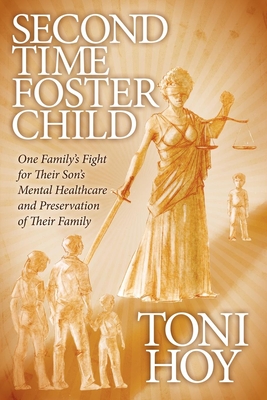"Second Time Foster Child" links parents locked into a custody relinquishment nightmare with other historically oppressed peoples. Child welfare attorneys, judges, and child welfare professionals will gain understanding of the parents’ perspective of a no-fault dependency case.
In a juvenile courtroom, the judge reprimanded the caseworkers, the attorneys, and CASA for responding to a no-fault dependency case as an abuse case, “There is nobody bad here!”
There were no criminals. There was no crime.
Then why were we sitting in the accused chairs?
As an infant, Daniel entered the foster care system as a result of severe neglect, which manifested in violence and aggression later in his childhood.
Desperate to get their adoptive son, Daniel, into a residential treatment center and keep their other children safe, the state of Illinois left Jim and Toni Hoy with two options. If they brought their son home from the psychiatric hospital for the 11th time in 2 years, the Department of Children and Family Services threatened to charge them with child endangerment for failure to protect their other children. Mental health professionals recommended abandoning him at the hospital after the state denied all viable sources of funding for his treatment. Making that choice would trigger a child abuse investigation and subsequent neglect charges.
Daniel re-entered the foster care system for no other reason than he was mentally ill.
A year later, Daniel’s mother discovered that his treatment was covered by a funding source that he was awarded as part of his special needs adoption. The EPSDT provision of Medicaid. How could they get the state government to understand the federal law and re-gain custody of their son?
"Second Time Foster Child" is the story of parents who never gave up on their son, despite being prosecuted and persecuted in exchange for his medically necessary treatment.
Get Second Time Foster Child by at the best price and quality guranteed only at Werezi Africa largest book ecommerce store. The book was published by Morgan James Publishing llc and it has pages. Enjoy Shopping Best Offers & Deals on books Online from Werezi - Receive at your doorstep - Fast Delivery - Secure mode of Payment
 Jacket, Women
Jacket, Women
 Woolend Jacket
Woolend Jacket
 Western denim
Western denim
 Mini Dresss
Mini Dresss
 Jacket, Women
Jacket, Women
 Woolend Jacket
Woolend Jacket
 Western denim
Western denim
 Mini Dresss
Mini Dresss
 Jacket, Women
Jacket, Women
 Woolend Jacket
Woolend Jacket
 Western denim
Western denim
 Mini Dresss
Mini Dresss
 Jacket, Women
Jacket, Women
 Woolend Jacket
Woolend Jacket
 Western denim
Western denim
 Mini Dresss
Mini Dresss
 Jacket, Women
Jacket, Women
 Woolend Jacket
Woolend Jacket
 Western denim
Western denim
 Mini Dresss
Mini Dresss






























































